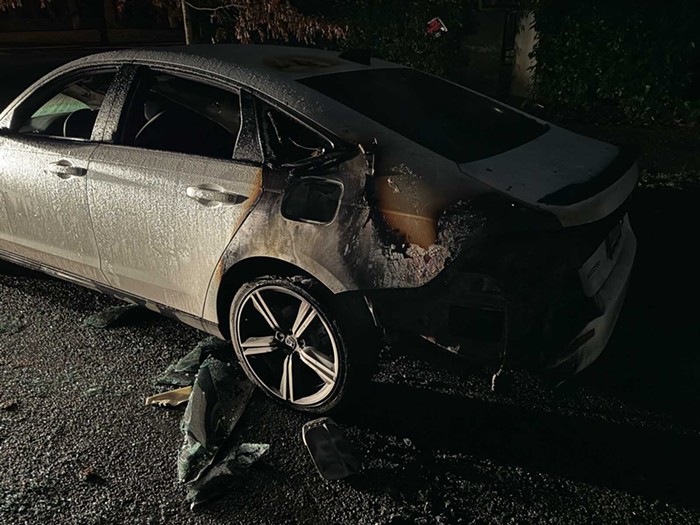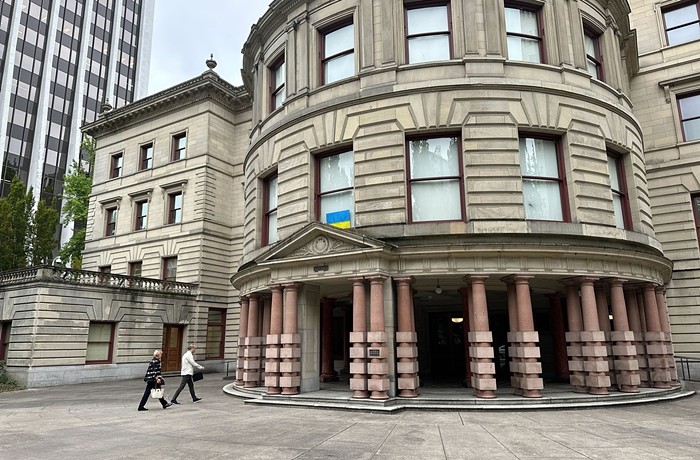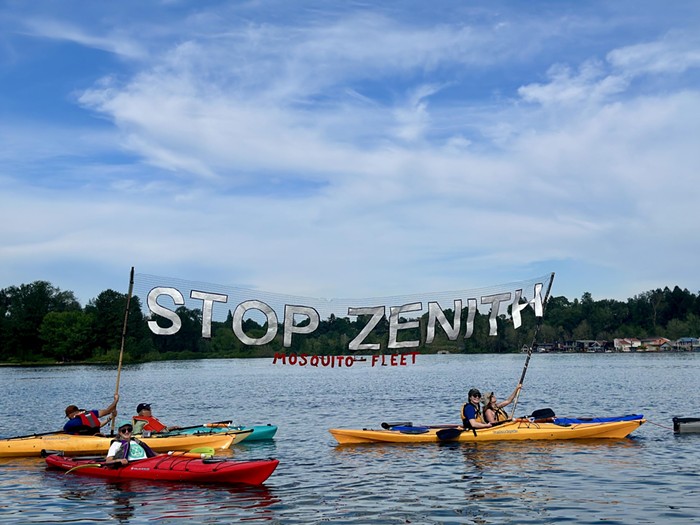IT'S NOT EVEN NOON on Thursday, July 29, and Amber Tilton's voice is already toast. The US Army Corps of Engineers ranger struggles to speak over the roar of the enormous circular generators that power the Dalles Dam. A group of 30 activists, environmentalists, and generally curious Portlanders crowd in close to get a view of the source of the electricity that turns on their light bulbs back home.
The source of Portland's energy was the topic of a unique, daylong field trip last week, "Where Does Energy Come From?" organized by Portland arts nonprofit the Dill Pickle Club. The giant Columbia River dam was the first stop on tracing the problematic path of Portland's energy.
Oregon's energy system is currently in an awkward adolescence. Though the state legislature passed a law in 2007 that requires utilities to get at least 25 percent of Oregon's power from renewable sources by 2025, to a large extent the state still runs on coal and natural gas. Cleaner energy sources, like the hydroelectric power produced at the Dalles, have their problems.
"The grid's not big enough to support all the wind power from the farms that are being put up," Tilton shouts to the gathered Portlanders over the din of the power generation behind her. "On a windy day, we'll shut down the generators one by one to compensate." The generators weren't designed to be turned on and off, so the constant shutdowns cause serious wear and tear.
Though Portland is aiming to be most sustainable city in the country, the two private utility companies that power the city (Portland General Electric and Pacific Power) produce meager amounts of renewable energy—4 percent and 10 percent of their portfolios, respectively.
Coal looms large—it accounts for 24 percent of Portland General Electric's (PGE) energy sources and a whopping 58 percent of Pacific Power's—but has become increasingly politically toxic. Facing a lawsuit from the Sierra Club and pressure from the state and City of Portland, last fall PGE agreed to shut down its controversial Boardman coal plant in Eastern Oregon ["Oregon's Filthy Secret," News, Oct 29, 2009]. The future of the state's energy is now in flux.
Hydroelectric power makes up 26 percent of PGE's energy mix and 11 percent of Pacific Power's, but the clean-energy dams have plenty of dirty problems.
Pointing to a plaster scale model of the Gorge, Tilton explains to the Dill Pickle Club tour how building the Dalles Dam made shipping easier along the Columbia River but eroded riverbeds, disrupted fish habitat, and flooded Celilo, the oldest continuously inhabited Native American settlement town in North America.
A few hours later, Chief Wilbur Slockish, a member of the Yakima Nation, greets the tour on a rocky riverbank near the dam. Slockish clearly remembers March 10, 1957, when the dam began operation and submerged the Celilo Falls, pouring over native fishing grounds and erasing a centuries-old way of life.
"Economics," said Cheif Slockish, "seems to be the downfall of all our traditions."
After bidding farewell to the chief, the Dill Pickle tour bus winds up a road flanked by rolling hills of wheat. It is golden grain as far as the eye could see, until 141 gargantuan tri-blade wind turbines come into view, rising 400 feet straight up.
This is the second stop on the tour: Sherman County's Biglow Canyon Wind Farm. Though the wind turbines' sleek fiberglass blades look futuristic, they generate some old-fashioned problems. Overloading the power grid, as Tilton mentioned at the Dalles Dam, is one of them. Also, as Chief Slockish noted, there's the economics. This wind farm will have cost $1 billion once all 217 turbines are grid ready at the end of 2010.
Tax incentives and Oregon's renewable energy mandates spurred explosive development of wind farms. While many see the tax breaks as a win-win (counties fill their coffers and create jobs, the farms create clean power and save the earth), they have also generated enormous controversy. The state legislature cut back on wind tax credits this year after some developers snagged multiple subsidies for single projects.
Back in Portland, the Dill Picklers get off the bus talking turbines. Dave Raphael, whose son recently took a job with the Washington, DC-based American Wind Energy Association, came on the tour to "get up to speed with my kid's work." He's now more aware of wind's potential—and the obstacles to its success.
"The Northwest is primed for wind development," says Raphael, "but we don't have a grid system that works." It's Oregon's energy adolescence in a nutshell: so much potential, so many growing pains ahead.



















